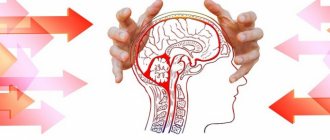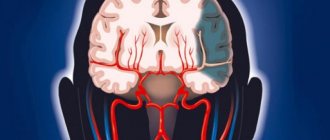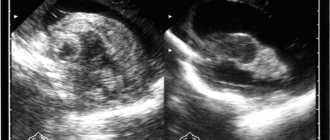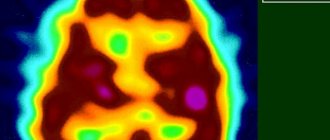The first months and years of a child are a time of amazing discoveries and important events for both him and his loved ones.
Every stage in development is tracked - sounds, emotions, words, steps. Sometimes it seems that other children develop faster and can do more. And anxious parents run to doctors, look for information in books and the Internet. Most often, after some time, the baby catches up with everything and after 2-3 years is no longer different from peers who were once ahead of him in terms of development standards.
And if some emotional and behavioral characteristics can be attributed to childhood, then during the period of preparation for school and at the beginning of education, the lag becomes obvious.
But symptoms of mental retardation even in a tiny baby indicate the presence of some problems in his internal or external world.
What causes ZPR - reasons
In approximately 75% of cases, the exact cause of the disease is unknown. We can only assume that the problem is due to defects in genes (or chromosomes), injuries or conditions that develop in the fetus in the womb, diseases of early life and environmental influences.
The role of genetics
If one or both parents have an intellectual disability, there is a much greater chance that their children will also have the condition. There are many genetic (inherited) causes of mental retardation, which occur due to deficiencies or omissions in the genetic material passed from parent to child. Sometimes mental retardation is caused by abnormalities in chromosomes rather than individual genes. Down syndrome, one of the most common causes of mental retardation, is caused by an extra chromosome in cells. Another fairly common chromosomal defect, called fragile X syndrome, causes PD mainly in boys.
* Genes are chemicals in the body that help determine a person's characteristics, such as hair or eye color, and are inherited from his parents. They are located on chromosomes found in the cells of the body. * Chromosomes (KRO-mo-somes) are thread-like structures inside the nucleus of cells on which genes are located.
Problems during pregnancy
Infections in pregnant women, such as rubella or toxoplasmosis, also cause mental retardation in children. Despite the fact that the mother may not suffer from the infection, the developing fetus becomes infected through the maternal body and has damage to certain areas of the central nervous system and other organs and systems. Pregnant women who drink alcoholic beverages are at risk of having a mentally retarded child through a condition known as fetal alcohol syndrome (FAS). This is a common and preventable cause of PVD. Some drugs (such as cocaine or amphetamines), when taken during pregnancy, can harm the baby's mental development. Maternal malnutrition and radiation exposure during pregnancy can also cause similar developmental disorders.
Birth injuries
Oxygen starvation in the fetus during childbirth is also a cause of mental retardation. Babies born prematurely are usually mentally retarded, especially if the baby weighs less than 1.5 kg.
Disorders that occur after birth
PPD can be caused by problems such as lead or mercury poisoning, severe malnutrition, accidents that cause severe head injuries, interruption of oxygen supply to the brain (such as near drowning), or diseases such as encephalitis, meningitis and untreated hypothyroidism in infants.
It is important to understand: before starting treatment and correction of the child’s condition, it is necessary to determine the roots of the problem.
What is ZPRR
Delayed mental speech development of a child is a disease in which he lags behind age norms in his psycho-emotional development. Characterized by speech dysfunction, behavioral disorders, emotional disorders - rigidity or lability. Some children also experience motor dysfunction.
Develops against the background of diseases of the brain or central nervous system. On the one hand, a special neurological status can cause a delay in the development of the psyche and speech, on the other hand, the pathology itself negatively affects mental development.
Main types of ZPR
Mental retardation is classified into four main types.
ZPR of a constitutional nature
Reasons: genetics. Symptoms: playful mood regardless of age, unstable attachment, disturbance of the emotional-volitional sphere, frequent mood swings.
ZPR of a somatogenic nature
Causes: severe illnesses with complications of brain function. Pathology can be triggered by previous surgical interventions, diseases of the cardiovascular system, dystrophies of various origins and severity, and allergic manifestations. Symptoms: causeless whims, increased nervousness, excessive complexes.
Mental retardation disorder of a psychogenic nature
Reasons: lack of parental attention and love, errors in upbringing, unfavorable living conditions. Symptoms: psychosis, attacks of nervousness, intellectual impairment, which ultimately leads to general psychological immaturity.
ZPR of cerebral-organic nature
Causes: intrauterine disorders that can occur due to a woman taking alcohol, toxic and narcotic substances during pregnancy. Sometimes the cause of the development of this particular type of pathology can be birth injuries and oxygen starvation of the brain during childbirth. Symptoms: instability of mental state.
Treatment
Practice shows that children with mental retardation may well become students in a regular general education school, rather than in a special correctional school. Teachers and parents must understand that the difficulties in teaching such children at the very beginning of their school life are not at all the result of their laziness or carelessness: they have objective, quite serious reasons that must be overcome together. It is difficult for parents to accept the fact that their child, due to his developmental characteristics, will learn more slowly than other children. But this needs to be done to help the little schoolchild.
Working with children with mental retardation requires an integrated approach and the participation of pediatricians, child neurologists, child psychologists, psychiatrists, speech therapists, and speech pathologists. Correction of mental retardation should begin in preschool age and be carried out over a long period of time.
Children with mental retardation must attend specialized preschool educational institutions or groups, Type VII schools or correctional classes in general education schools. Peculiarities of teaching children with mental retardation include the dosage of educational material, reliance on clarity, repeated repetition, frequent change of activities, and the use of health-saving technologies.
When working with such children, special attention is paid to the development of cognitive processes (perception, attention, memory, thinking); emotional, sensory and motor spheres using play therapy and other modern methods. Correction of speech disorders in mental retardation is carried out by a speech therapist in individual and group classes. Together with teachers, correctional work on teaching students with mental retardation is carried out by special education teachers, psychologists, and social educators.
Medical care for children with mental retardation includes drug therapy in accordance with identified somatic and cerebral-organic disorders, physiotherapy, exercise therapy, massage, and hydrotherapy.
Symptoms of mental retardation in children at different age intervals
Sometimes signs of the disorder can be observed in children immediately after birth, and in some cases, problems begin to appear at school age and later. It is important to learn to recognize your baby’s characteristics in time.
Let's look at the main anxiety symptoms for different age categories of children:
- Mental developmental development up to one year: late starts to hold up head, crawl, walk, talk, use cutlery.
- Signs of mental retardation per year - a quiet, unemotional child, with a limited or absent set of simple words, does not show a reaction to being addressed.
- ZPR 2 years old - no desire to learn something new by repeating after others, a primitive set of words (up to 20), no ability to compose logical phrases and sentences, limited memory skills.
- Symptoms of mental retardation in children 3 years old - rapid unconscious speech with swallowing sounds, syllables or word endings, when answering a question, may think for a long time and repeat the question itself, slow movements or hyperactivity, no desire to explore the world around them, aggressiveness, increased salivation, narrow spectrum emotions, signs of cerebral palsy may appear.
- Mental retardation 4 years - tearfulness, aggressiveness, emotional instability, causeless laughter or hysteria, underdeveloped speech, ignoring requests from adults, difficulty in contacting others.
- Mental retardation in a 5-year-old preschooler - ignoring peers, aggressiveness or complete passivity, sudden mood swings, speech difficulties, especially in constructing even a simple dialogue, difficulties with memory, lack of simple everyday skills.
- Mental retardation 6 years old - behavioral disorders, difficulty concentrating, performing basic everyday skills, noticeable lag behind peers in speech, emotional and intellectual development.
- Symptoms of mental retardation in children aged 7 years - difficulties with reading, problems with logical problems and mathematical calculations, lack of emotional contact with peers, poor vocabulary, difficulties in voicing their thoughts and requests, behavioral problems (aggression, tearfulness, whining, self-isolation , unreasonable laughter, etc.).
- Features of mental retardation in adolescents - mental instability, undeveloped self-esteem, no resistance to criticism, trying to avoid the team, psychomotor disinhibition and excitability, suppressed cognitive activity, limited memory (usually short-term), impaired verbal-figurative, visual-figurative and visual-effective thinking , speech disorders, lack of motivation, development of infantilism. A characteristic symptom of psychophysical infantilism is hysteroid psychopathy and depressive states.
At an early age, it is problematic to diagnose mental retardation. The most pronounced symptoms can be observed in preschool age, when self-care skills, spatial orientation, communication skills, fully developed memory and formed speech should already be formed. Regardless of the age at which mental retardation was diagnosed, correction of this condition must be started immediately.
Features of childhood dementia
Preschool age only forms a personality, which is characterized by many factors: developmental characteristics, temperament, individuality.
Only after the child goes to school can parents identify a developmental disorder. Such children practically do not master the program. It is not possible to attract the attention of oligophrenics and fix it on something. Difficulties arise with memorization and retelling—children suffering from ID are unable to retain received information in memory for a long time.
A “special” student usually does not understand the essence of the task and does not grasp the connections between things and phenomena. It is very easy to intimidate him in such a situation: you just have to shout, and the psychological trauma that follows the stress is inevitable.
Depending on the environment, such a child can develop into two completely different personality types:
- kind and sympathetic, ready to help at any moment, vulnerable and warm-hearted;
- embittered and aggressive, who, having no desires and feelings of their own, are subject to the negative influence of others.
A practicing psychotherapist shared the story of a boy who was doomed to mental illness while still in utero development. A dysfunctional mother carried a child in violation of all acceptable rules: she smoked, drank alcoholic beverages, and took psychotropic drugs. After the birth of the child, he was deprived of proper attention.
After some time, the visiting nurse noticed some mental underdevelopment of the baby: he could not hold his head up on his own and did not make any sounds. Thanks to the prompt and coordinated work of medical workers, the boy was saved. And at the moment it has practically adapted to modern living conditions.
A predisposition to mental illness or unacceptable behavior of a pregnant woman is a reason to warn her about the possible dementia of the unborn child.
However, a loving and caring mother who leads a healthy lifestyle and has absolutely no prerequisites for the occurrence of mental pathologies can also face the problem of dementia in her child.
Having noticed the first alarm bells, which are a definite reason for consultation, you must immediately contact a qualified specialist. This will give you the opportunity to deeply adapt your baby to society before the moment of his socialization.
Screening and tests
Diagnosis of mental retardation can only be performed by a certified psychologist capable of administering, scoring, and interpreting an intelligence or cognition test. Screening for the disease includes tests to analyze the child's intellectual and adaptive development, including the Denver Abnormal Development Test and IQ testing (these tests are performed on children and adolescents under 18 years of age.)
Children with an IQ of less than 70 and with limitations in two or more areas of adaptive behavior (eg, motor skills, communication abilities, self-help and independent living skills, and other daily living skills) generally may be considered intellectually disabled.
Prevention and development forecast
A number of measures can be taken to prevent PPD.
When planning and during pregnancy
Before conception and while carrying a child, in order to prevent the disease, pregnancy should be treated with great responsibility. Avoid adverse effects on the fetus, maintain a healthy lifestyle and monitor your health. You cannot take medications without consulting your doctor, drink alcohol or drugs, or visit places with an unfavorable environmental background.
After birth
The main task of a parent who wants to protect the child’s psyche from illness is to provide him with optimal living conditions. Care must be taken to ensure that family relationships do not cause discomfort and stress to the child. It is also important to monitor his health and intellectual skills so that he grows into an independent person.
If you notice any abnormalities in a child, you need to take timely action to correct the mental retardation. We need to pay attention to its development. Playful forms of learning using fairy tales or drawings are effective. We also must not forget to stimulate the child’s speech, for example, by retelling or composing stories based on drawings.
Also, if you suspect the development of pathology, you should consult a specialist. With timely treatment, you can prevent the worsening of the disease and get rid of it completely. However, in some cases the problem can only be partially eliminated. The outcome of treatment depends on the correction methods and the origin of the pathology.
Complications and consequences
Late diagnosis of children with mental retardation and correction of this complex mental state can forever leave an imprint on the child’s life. Adolescence for a full-fledged child goes through difficulties, and for a child with mental retardation, inferiority complexes may additionally develop, which provoke a number of difficulties in communicating with the opposite sex and with peers. Low self-esteem leaves a negative imprint on academic performance and aspiration, and as a result, increased conflict appears in the team and family. Neglected situations can lead to irreversible consequences - severe depression and suicide. ZPR can provoke the development of chronic and incurable defects: various mental disorders, impairment of written, speech, and everyday skills. In adulthood, there may be problems with adaptation, working in a team, and starting a family.
Autism
Autism is a multifunctional neurodevelopmental disorder that affects intellectual and social skills. The prevalence of autism, according to WHO data from 2016, is 1 in 160 children, with boys being more at risk (as a result of better development of protection against genetic damage responsible for the development of autism in girls).
Over the past 50 years, there has been an increase in the prevalence of autism cases, but no dependence on the development of the country has been identified at the moment. It is possible that it is not the number of cases itself that has increased, but the number of their registration due to the development of diagnostics and increased reporting of morbidity.
REASONS FOR THE APPEARANCE
Both genetic and environmental factors influence the development of autism, but the key reason for the development of autism is genetic abnormalities, which cause changes in the functioning of certain areas of the brain that provoke autism behavior. Under the influence of genetic mutations, most of the varieties of which have now already been identified, the formation of neurons in the superficial layer of the cerebral cortex is disrupted, as well as, which plays a special role, neurons responsible for connecting parts of the brain, thereby causing behavior typical of autism.
The environment also plays an important role in the development of autism: mental trauma can serve as a provocateur, after which the child’s behavior changes and some acquired skills are lost, irritability and stereotypical movements appear. At the moment, some factors are known that can prevent the onset of autism: for example, it has been proven that taking folic acid during pregnancy helps the normal development of the child’s nervous system and significantly reduces the risk of neurological disorders, including autism.
MANIFESTATIONS OF AUTISM
It is not always possible to recognize the disease from the very beginning, since it manifests itself in a variety of ways (there are 7 variants of autism), and sometimes the symptoms can resemble the development of other diseases accompanied by behavioral disorder. However, from birth certain trends are observed: the child screams little, does not move very actively, does not perceive speech (which can sometimes be mistaken for hearing impairment). The child does not like to be held and play, and sometimes certain repetitive actions are observed: moving the same object from place to place, fixing the gaze on one point.
Also, these children do not like to eat solid foods without having any physiological problems associated with swallowing and digestion. When a child grows up, he becomes withdrawn and does not like creative activities.
When communicating with people, such children do not show much interest and try to avoid eye contact. For such a child, everything is perceived too strongly, too brightly, which causes irritation and a desire to distance themselves, while they want to be understood even more than ordinary people. Their behavior reveals a set of stereotypical movements (rubbing palms, throwing their heads), walking features (walking on tiptoes, rocking), which intensify in situations of even slight stress, which for such children can be even a simple change of environment.
When communicating with people, an autistic person perceives himself as a third person, does not joke and does not understand jokes, sometimes does not understand the meaning of what he reads, while being mechanically able to read very quickly. The development of intelligence can be unpredictable: from developmental delay to the highest mental abilities.
Another pitfall in the development of autism is the possible combination with other neurological disorders (epilepsy, depression, attention deficit, hyperactive disorder), so it is important to be observed not only by a general neurologist, but also to undergo examinations by an epileptologist.
DIAGNOSIS OF AUTISM
Timely diagnosis plays a key role in the prognosis of the disease. It is important for parents to consult a doctor promptly if they have symptoms characteristic of autism. At a consultation with a pediatric neurologist, the diagnosis of the disease is determined based on the symptoms. In order to understand the degree of involvement of brain structures and disturbances in its activity, as a rule, electroencephalography is prescribed, the results of which must be monitored over time, that is, it must be taken regularly.
DEVELOPMENT PROGNOSIS OF A CHILD WITH AUTISM
The development of a child with autism depends entirely on the timing and extent of corrective measures taken to help the child's condition remain stable. It is worth noting that in most cases mild forms of autism occur. A child can become a full-fledged part of society if he starts classes with a psychotherapist, pediatric neurologist, etc. in time, while continuing to have only some behavioral features in the form of a lack of a sense of humor, unsociability, self-isolation and misunderstanding of the emotions of others. In this case, adequate social behavior is formed.
In some cases, the condition may worsen, which subsequently manifests itself as hearing and speech impairment, precisely because the child does not perceive and understand what is being said and stops listening and trying to understand. Due to insufficient functioning, the sense organs gradually lose their function. Currently, scientific research is aimed at expanding the possibilities of early diagnosis, and therefore early intervention.
For example, it has been found that reduced eye contact or its decline in developmental dynamics at the age of 2–6 months can help to suspect the presence of autism already at the beginning of its development. Symptoms of autism begin in the first 5 years of life, so it is very important to have regular evaluation by a pediatric neurologist as early as infancy.
The doctor can help maintain acquired skills, stop their regression and thus promote relatively normal development of the child, using behavioral and, if necessary, drug therapy.
TREATMENT
The leading role in the treatment of autism is occupied by the rehabilitation of patients, providing them with comfortable living conditions in society and developing their relationships with people, making them more accessible to such children. All this is achieved through close contact with the attending neurologist and psychologist.
The leading doctor provides the child’s family with the necessary information and refers them to the necessary research and consultations with specialists in a particular case. The stimulant effect plays an important role in the treatment of autism. This effect is possible with physical stimulation using transcranial magnetic stimulation (TMS). Object therapy aimed at stimulating the senses, treatment with sand, horses, dolphins and physical activity have a positive stimulating effect.
A method of teaching a child is also used, which creates a comfortable atmosphere without any irritating factors, with a complete absence of changes in the location of surrounding objects. In any case, learning should take place in a very gentle form, without prompting to action and with a gradual, slow increase in the complexity of the actions being studied.
For more complex forms of autism, a technique is used to teach the child every elementary action in everyday life, which gradually develops into a series of stereotypical actions. Science at the moment, thanks to the high development of genetics, provides new treatment methods that are still only at the development stage. Research is complicated by the fact that it is difficult to select a similar model of the brain structure to test treatment: even in animals that have all the similar structures, the behavioral aspect that is affected by autism is not represented as clearly in humans as in humans.
It has been revealed that the development of autism is associated with impaired cholesterol metabolism; normalizing its metabolism and using cholesterol-lowering drugs (statins) is intended to reduce developing behavioral disorders in autism.
Thus, in the development of approaches to the treatment of autism, genetic therapy and treatment of excess cholesterol come to the fore, although the most important and irreplaceable component of any therapy for autism is communication and education, which allow the child to integrate into society. From the social sphere, WHO focuses on carrying out health education work in different countries (April 2 is recognized as World Autism Awareness Day), work aimed at improving the mental state of patients, improving the quality of care for people with disabilities, as well as increasing reporting on the results of social and rehabilitation activities that are aimed at improving the position of a patient with autism in society.
Treatment of autism in Perm is possible using transcranial magnetic stimulation in a diagnostic and treatment setting using a specially developed technique for autism. The course includes 20 sessions and must be repeated depending on the indications. You must first make an appointment with a neurologist and, if indicated, undergo the necessary instrumental studies: as a rule, it is enough to do an electroencephalography. You can find out about the possibility of transcranial magnetic stimulation, consultation with a neurologist and treatment in Perm here.
Rules for raising a child with mental retardation
After hearing a diagnosis, every parent, first of all, must emotionally gather themselves and prepare for the difficult struggle for a full-fledged future for the child. Indeed, in medical practice there are quite a lot of examples when children, after being diagnosed with mental retardation, studied in regular schools and demonstrated, if not high, but average educational success. The second thing you need to understand is that something doesn’t work out for a child not because of laziness, it’s just that everything comes a little more difficult and slower to him. There is no need to independently develop a sense of inferiority in your baby with constant reproaches and abuse. The main task of parents is to support, motivate, help, demonstrate understanding and love.
Methods for diagnosing pathology
Diagnosis is approached in a comprehensive manner. This means that a small patient is examined by different specialists - a pediatrician, an otolaryngologist, a neurologist, a speech therapist. In addition to collecting an anamnesis, examining and assessing the child’s health, he is sent for hardware diagnostics. This is necessary because, against the background of ZPRD, organic matter changes, in particular, the work of the left hemisphere of the brain, which is responsible for the development of speech, is disrupted. Therefore, the final diagnosis is made based on the results of examinations - EEG, computed tomography, evoked potentials technique.
After diagnosis, comprehensive treatment begins. A neurologist, psychologist, speech therapist, and reflexologist take part in it. Parents play a huge role - without them it is impossible to achieve success.
Is it possible to prevent PPD?
There is no specific way to prevent mental retardation. Improved health care, prenatal testing, and public health education can help prevent some cases of BD. People who want to become parents can receive genetic counseling to determine the likelihood of mental retardation from an inherited disorder. Medical tests such as amniocentesis, human chorionic villus sampling and ultrasonography can help identify inherited metabolic and chromosomal disorders associated with mental retardation. Vaccinations can protect pregnant women from infections that harm the fetus. Newborn blood test screening can detect some disorders at birth, allowing for earlier treatment. It is also important to protect children from lead poisoning and head injuries.
* Amniocentesis (am-nee-o-sen-TEE-sis) is a test in which a long, thin needle is inserted into the mother's uterus to obtain a sample of amniotic fluid. Fetal cells in the fluid are examined for genetic defects. * Chorionic villus sampling (VOR-lus KOR-ee-on-ik sampling) is a test in which a small tube is inserted through the cervix and a small piece of the placenta supporting the fetus is removed for genetic testing. * Ultrasonography (ul-tra-so-NOG-ra-fee) is a painless test that uses high-frequency sound waves to record and display the shape of the fetus in the mother's uterus.
Stages of mental retardation
More recently, the traditional view of the types of oligophrenia has been revised.
Previously highlighted:
- Debility is the easiest type of intellectual disability.
- Imbecility – cases of a moderate form of developmental disorder.
- Idiocy is an advanced stage.
Each of these types was in turn divided into three degrees of severity.
Modern medical classification has excluded these terms for a number of reasons. The most significant is the penetration of terminology into the spoken language with a clear derogatory connotation.
At the present stage of psychiatry, there are 4 types of mental retardation:
- Lightweight, appropriate for debility.
- Moderate, from a clinical point of view, being uncomplicated imbecility.
- Severe, manifested by an advanced imbecile clinic.
- Deep, inherently idiotic.
Features of diagnosing mental retardation in children - reviews
| Positive | Negative |
| Our daughter has ZPR due to extensive oxygen deprivation in the womb and during childbirth (I had an accrete placenta to the uterus along the entire perimeter, which was not visible on the ultrasound). But, I thank the Lord that we ended up with a competent doctor, who coordinated all my further actions, selected medication treatment, and we, although not exactly the same as our peers, understand a lot and strive to learn. We're about to start kindergarten, it's important to believe that everything will be fine, mommies, don't despair, everything will work out for you! (Yulia Sergeevna) | I've been just torn lately, probably by autumn depression. Our son is almost 2 years old, we were diagnosed with mental retardation, but in terms of development he doesn’t even match a six-month old, except that he can walk. Something tells me that it’s not just a matter of mental retardation, and the doctors aren’t even trying to “dig” and “dig” further. (Sonya) |
| We were diagnosed with moderate mental retardation at the age of 5 years. We had classes with a speech therapist, a psychiatrist, rode horses, underwent dolphin therapy, and you know, my daughter changed every day before our eyes. We continue to fight for a healthy future for the dearest girl in our life! (Svetlana) | It is impossible to diagnose mental retardation at an early age, no matter how you look at it, since all organisms are individual. So you shouldn’t drug your baby from birth just because he’s not developing quite the way you’d like!) Olga) |
| We had problems with speech development and behavior, sessions with a speech therapist and a psychiatrist, and in just six months all the nuances were resolved. And why, because we started ringing all the bells when, at one and a half years old, we still hadn’t heard a single word from our son, only incoherent babble. Now we are 2, and we are already talking in conscious sentences, and the picture has improved with our behavior. It’s true what they say, early diagnosis will help solve many problems! (Elizabeth) | As for me, each person is individual, and the criteria that are attributed to mental retardation can be attributed to every second person. As for me, a very dubious diagnosis. (Lilya) |
| I contracted rubella when I was 6 months pregnant, and took the risk of giving birth, despite all the persuasion of doctors to perform an artificial birth. And you know, yes, everything is more difficult for us, we hone each skill through repetition, but everything can be adjusted if you love your baby very much. (Milena) |
Reasons for appearance
As mentioned above, brain damage and structural defects are to blame for underdevelopment of the brain. There are the following main groups that determine the presence of a control system:
- hereditary diseases (chromosomal and genetic);
- intrauterine infections - toxoplasmos, rubella and others that negatively affect the fetus;
- maternal consumption of toxic substances, alcoholic beverages, strong drugs, radiation, smoking;
- fetal prematurity;
- problems during childbirth and in the first months of a child’s life - oxygen starvation, mechanical head injuries, infectious diseases;
- lack of normal upbringing, training and socialization, the impossibility of full-fledged brain function as a result of this;
- unknown etiology.











